CSE(AI&ML)-Academics
Welcome to CSE (Artificial Intelligence & Machine Learning)
PEOs, POs & PSOs
PEO's
PEO2: Graduates will have the skills they need for a successful career in AI and related fields that meet the needs of the country and businesses.
PEO3: Graduates will function effectively in workplace with demonstrable attributes like leadership, lifelong learning, and teamwork in order to meet the requirements of society.
PSO's
PSO2: Ability to apply technical knowledge and usage of modern tools related to AI and ML for solving real world problems.
PO's
PO1: Engineering knowledge: Apply the knowledge of mathematics, science, engineering fundamentals, and an engineering specialization to the solution of complex engineering problems.
PO2: Problem analysis: Identify, formulate, review research literature, and analyse complex engineering problems reaching substantiated conclusions using first principles of mathematics, natural sciences, and engineering sciences.
PO3:Design/development of solutions: Design solutions for complex engineering problems and design system components or processes that meet the specified needs with appropriate consideration for the public health and safety, and the cultural, societal, and environmental considerations.
PO4: Conduct investigations of complex problems: Use research-based knowledge and research methods including design of experiments, analysis and interpretation of data, and synthesis of the information to provide valid conclusions.
PO5: Modern tool usage: Create, select, and apply appropriate techniques, resources, and modern engineering and IT tools including prediction and modelling to complex engineering activities with an understanding of the limitations.
PO6: The engineer and society: Apply reasoning informed by the contextual knowledge to assess societal, health, safety, legal and cultural issues and the consequent responsibilities relevant to the professional engineering practice.
PO7: Environment and sustainability: Understand the impact of the professional engineering solutions in societal and environmental contexts, and demonstrate the knowledge of, and need for sustainable development.
PO8: Ethics: Apply ethical principles and commit to professional ethics and responsibilities and norms of the engineering practice.
PO9: Individual and team work: Function effectively as an individual, and as a member or leader in diverse teams, and in multidisciplinary settings.
PO10: Communication: Communicate effectively on complex engineering activities with the engineering community and with society at large, such as, being able to comprehend and write effective reports and design documentation, make effective presentations, and give and receive clear instructions.
PO11: Project management and finance: Demonstrate knowledge and understanding of the engineering and management principles and apply these to one’s own work, as a member and leader in a team, to manage projects and in multidisciplinary environments.
PO12: Life-long learning: Recognize the need for, and have the preparation and ability to engage in independent and life-long learning in the broadest context of technological change.
Active Learning
Innovative Teaching Techniques
Teaching is an art and science. Teaching is a process of imparting knowledge and skills. It is a systematic process based on some educational objectives to communicate.
The following innovative teaching methods are being adopted:
Interactive Learning
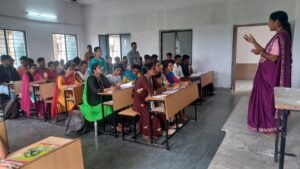
Interactive Learning is a pedagogical approach that incorporates social networking and urban computing into course design and delivery. Interactive Learning has evolved Interactive out of the hyper-growth in the use of digital technology and virtual communication, particularly by students
Interactive learning is a hands-on, real-world approach to education. ‘Interactive learning actively engages the students in wrestling with the material. It reinvigorates the classroom for both students and faculty. Lectures are changed into discussions, and students and teachers become partners in the journey of knowledge acquisition.’
Interactive learning can take many different forms. Students strengthen their critical thinking and problem-solving skills using a much more holistic approach to learning. Interactive learning can take place across the curriculum with technology.
Benefits of Interactive Learning:
- Engaging content
- Saves cost and time
- Flexible learning
- Teachers can make use of interactive learning tools
Collaborative Learning

“Collaborative learning is an umbrella term for a variety of educational approaches involving joint intellectual effort by students, or students and teachers together. Usually students are working in groups of two or more, mutually searching for understanding, solutions or meanings, or creating a product.
Collaborative learning activities vary widely, but most center on students’ exploration or application of the course material, not simply the teacher’s presentation or explication of it”.
The benefits of collaborative learning:
- Development of higher-level thinking, oral communication, self-management, and leadership skills.
- Promotion of student-faculty interaction.
- Increase in student retention, self-esteem, and responsibility.
- Exposure to and an increase in understanding of diverse perspectives.
Flipped Classroom
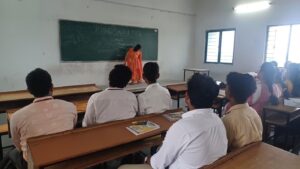 A flipped classroom is an instructional strategy and a type of blended learning that reverses the traditional learning environment by delivering instructional content, often online, outside of the classroom.
A flipped classroom is an instructional strategy and a type of blended learning that reverses the traditional learning environment by delivering instructional content, often online, outside of the classroom.
Flipped Learning shifts the classroom from passive to active learning, focusing on higher order thinking skills such as evaluating, analyzing, and creating to engage students in learning. The approach relies on understanding the difference between information and knowledge acquisition, providing students with active learning possibilities.
Students are given opportunities to take greater responsibility for their own learning. Class time focuses more on exploration, finding meaning and application of knowledge. Teaching is focused more on providing significant learning opportunities, providing feedback through a variety of pedagogical strategies and ensuring understanding
The benefits of flipped learning:
- More one-to-one time between teacher and student more one-to-one time between teacher and student
- More collaboration time for students
- Students learn at their own pace
- It encourages students to come to class prepared
- Practical things – like missing class due to illness – become less problematic
- Subject matter content becomes infinitely richer
- It’s cost-effective!
Role Play

Role play in the classroom is a form of instruction in which you have students take the part of someone else so that they can understand a situation from a different perspective than they normally would.
The benefits of Role Play learning:
● It’s Social and Communal
● Prepares for Real Life
● Indicates Current Skill Level
Think-Pair-Share

Think-Pair-Share (TPS) is a collaborative learning strategy in which students work together to solve a problem or answer a question about an assigned reading. This technique requires students to (1) think individually about a topic or answer to a question; and (2) share ideas with classmates. Discussing an answer with a partner serves to maximize participation, focus attention and engage students in comprehending the reading material.
Benefits:
- The Think-Pair-Share strategy is a versatile and simple technique for improving students’ reading comprehension.
- It gives students time to think about an answer and activates prior knowledge.
- TPS enhances students’ oral communication skills as they discuss their ideas with one another.
- This strategy helps students become active participants in learning and can include writing as a way of organizing thoughts generated from discussions.
Case Based Learning
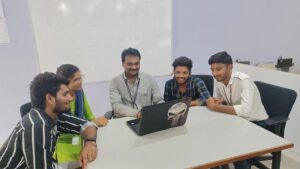
This method is learner-centered with intense interaction between participants as they build their knowledge and work together as a group to examine the case
The instructor’s role is to facilitate the students collaboratively analyze and address problems and resolve questions.
The benefits of Case Based learning:
- More focusing on learning objectives
- Flexibility on the use of the case,
- Ability to induce a deeper level of learning
Cooperative Learning
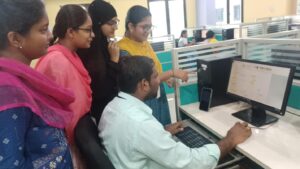
Cooperative learning is the process of breaking a classroom of students into small groups so they can discover a new concept together and help each other learn. The core element of cooperative learning is to showcase the positive effects of interdependence while underlining the importance of personal responsibility.
This happens naturally in cooperative learning since students work with one another, but they all have a different task to accomplish or concept to explain.
5 Elements of cooperative learning
- Positive interdependence
- Face-to-face interaction
- Individual and group accountability
- Interpersonal and small group skills
- Group processing
The benefits of Cooperative learning:
- Higher achievement.
- Increased retention.
- More positive relationships and a wider circle of friends.
- Greater intrinsic motivation.
- Higher self-esteem.
- Greater social support.
- More on-task behavior.
- Better attitudes toward teachers
Game Based Learning
Game based learning (GBL) is a type of game play that has defined learning outcomes. Generally, game based learning is designed to balance subject matter with gameplay and the ability of the player to retain and apply said subject matter to the real world.
The benefits of Game-based learning:
- Increases Child’s Memory Capacity.
- Computer & Simulation Fluency.
- Helps With Fast Strategic Thinking & Problem-Solving.
- Develops Hand-Eye Coordination.
- Specifically For Children with Attention Disorders.
- Skill-Building.
Learning by Doing

Learning by doing refers to a theory of education expounded by American philosopher John Dewey. It’s a hands-on approach to learning, meaning students must interact with their environment in order to adapt and learn.
The benefits of Learning by doing:
- Experiential learning is engaging and sticks
- Experiential learning is personal
- Experiential learning is community-connected
- Experiential learning builds success skills.
- Experiential learning is integrated
Project Based Learning
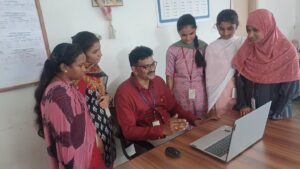
Project Based Learning is a teaching method in which students gain knowledge and skills by working for an extended period of time to investigate and respond to an authentic, engaging, and complex question, problem, or challenge.
The benefits of Project-Based Learning:
- Collaboration
- Problem Solving
- Creativity
- In-Depth Understanding
- Self-Confidence
- Critical Thinking
- Project Management
- Curiosity
- Empowerment
Open Educational Resources
Open educational resources include full courses, course materials, modules, textbooks, streaming videos, tests, software, and any other tools, materials, or techniques used to support access to knowledge.
Like Blog, MOOC(Massive Open Online Course), Moodle etc.

